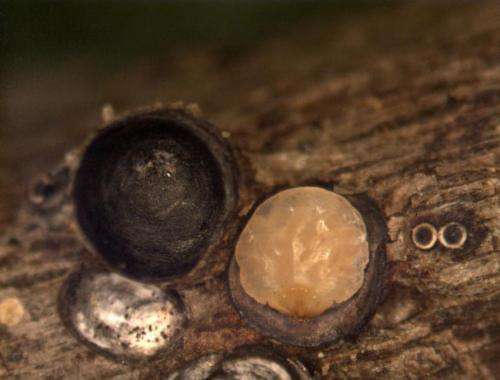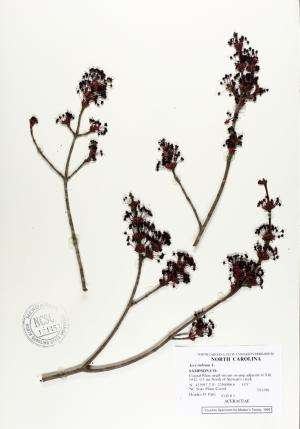Museum specimens, modern cities show how an insect pest will respond to climate change

Researchers from North Carolina State University have found that century-old museum specimens hold clues to how global climate change will affect a common insect pest that can weaken and kill trees – and the news is not good.
"Recent studies found that scale insect populations increase on oak and maple trees in warmer urban areas, which raises the possibility that these pests may also increase with global warming," says Dr. Elsa Youngsteadt, a research associate at NC State and lead author of a paper on the work.
"More scale insects would be a problem, since scales can weaken or kill the trees they live on," Youngsteadt says. "But cities are unique, so we wanted to know whether warming causes scale insect population explosions in rural forests, the way it does in cities."
To address that question, Youngsteadt examined more than 300 museum specimens of red maple branches collected between 1895 and 2011 in rural areas of North Carolina, South Carolina and Georgia. By evaluating the scale insect remains attached to each specimen, Youngsteadt estimated scale population density and compared it to the average August temperature for the year and place where the specimen was collected. Youngsteadt then compared the findings from the historical specimens with more recent data from urban Raleigh, North Carolina.
"Scale insect density in rural areas was not as high as it was in the city, but there was a common pattern," Youngsteadt says. "Scale insects were most likely to be present on specimens collected during warm historical time periods, and scales were most abundant when temperatures were similar to modern, urban Raleigh."

Given the shared urban and historical pattern, the researchers also predicted that scale insects would be more abundant in rural forests today than in the past, as a result of recent climate warming. To test this prediction, Youngsteadt went to 20 sites where historical specimens were collected from 1970 to 1997 and sampled their modern scale insect populations.
"Sure enough, scale abundance had increased at 16 of the 20 sites," Youngsteadt says. "Overall, we found a total of about five times more scale insects in 2013 than on the historical specimens from the same locations.
"The urban and historical data are so well-aligned that we can view scale insect populations in cities as a preview of what to expect elsewhere," Youngsteadt adds. "It also suggests that we should begin looking at cities for clues to how other insect species will respond to higher global temperatures."
The paper, "Do cities simulate climate change? A comparison of herbivore response to urban and global warming," is published in the journal Global Change Biology. Co-authors include Adam Dale, Dr. Rob Dunn and Dr. Steve Frank of NC State, and Dr. Adam Terando of the U.S. Geological Survey and NC State.
The results are consistent with other recent studies from Frank's lab, which showed that two species of scale insects infesting maple and oak benefit from urban warming. The new study suggests that these urban studies have broader relevance not just to cities but also to global warming in rural areas.
Journal information: Global Change Biology
Provided by North Carolina State University




















